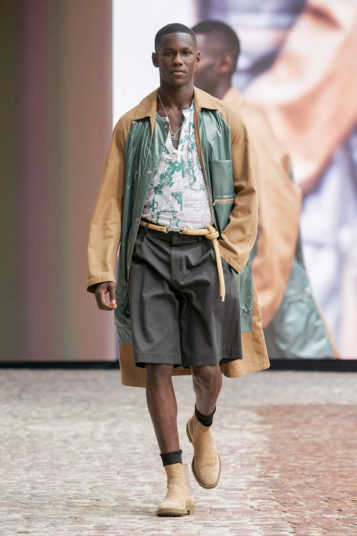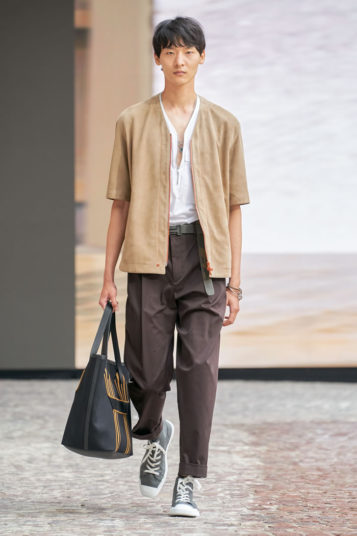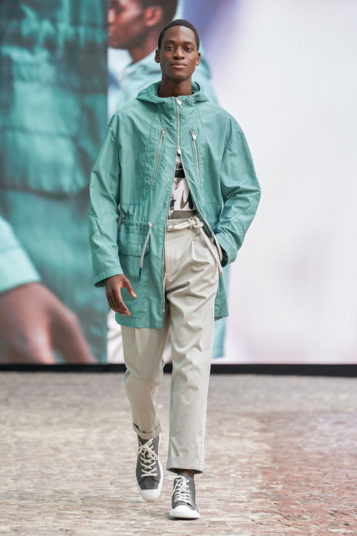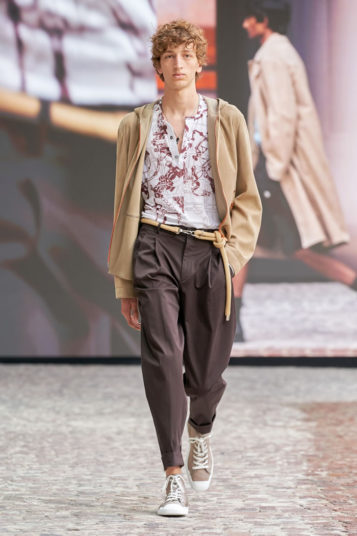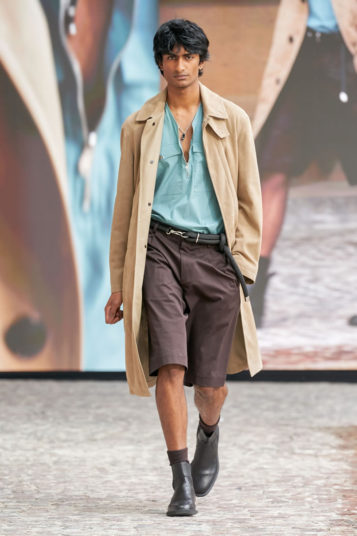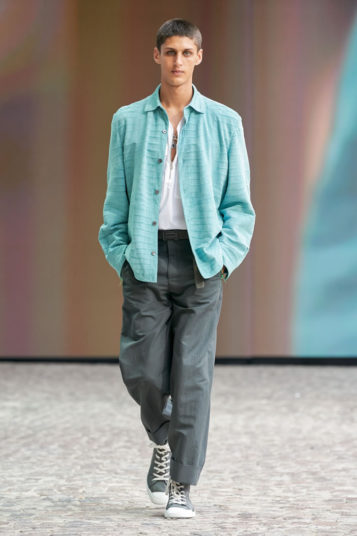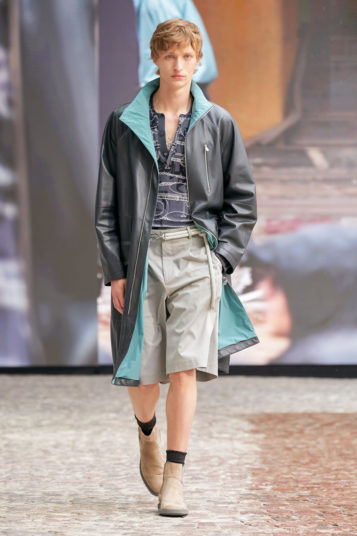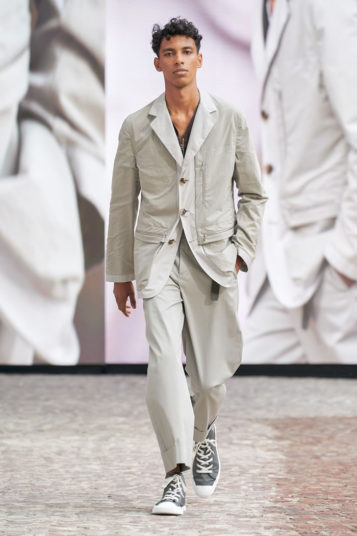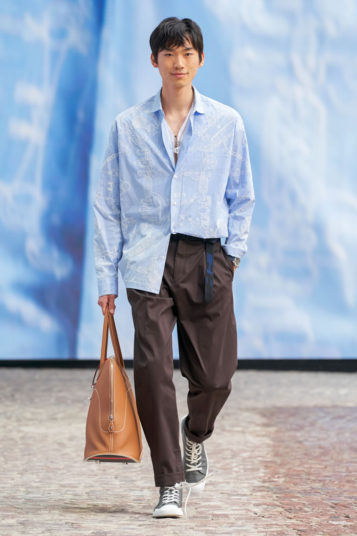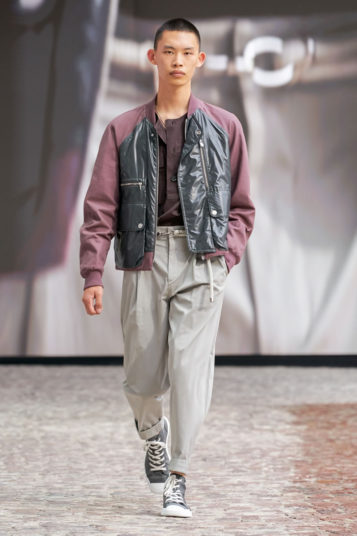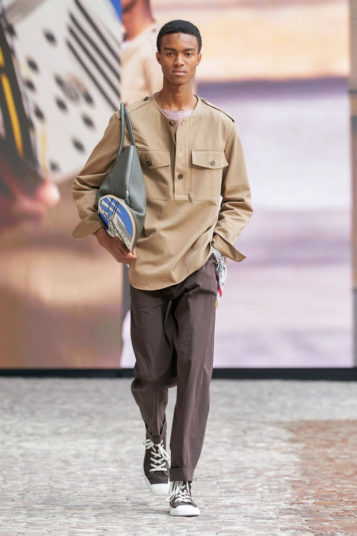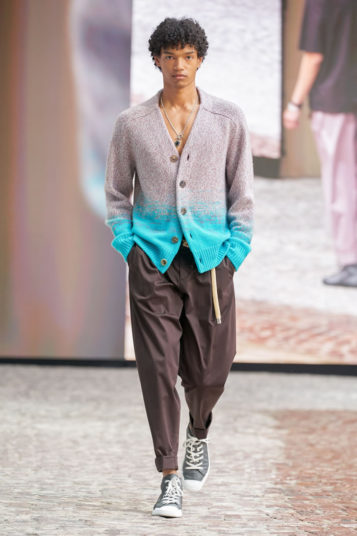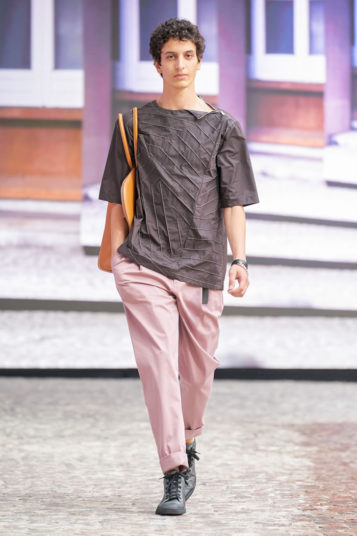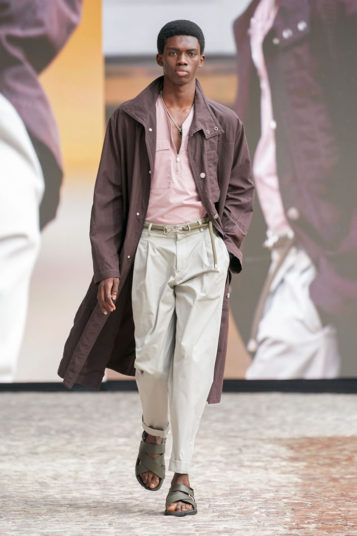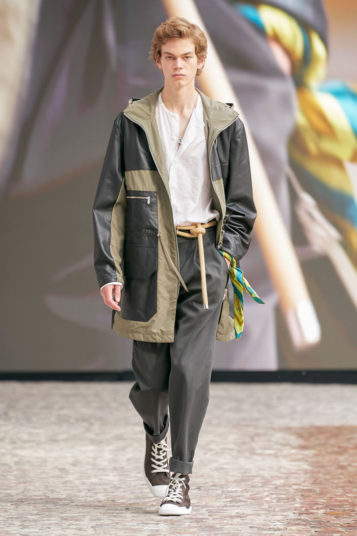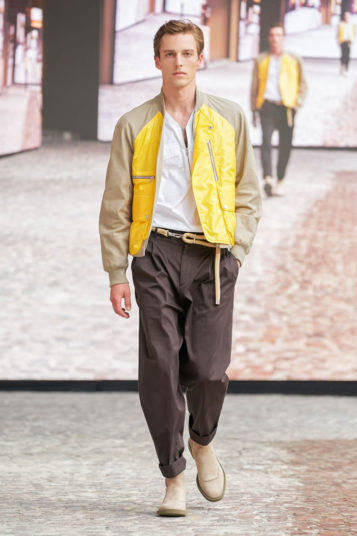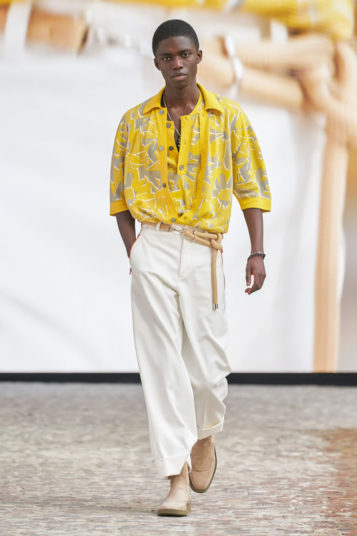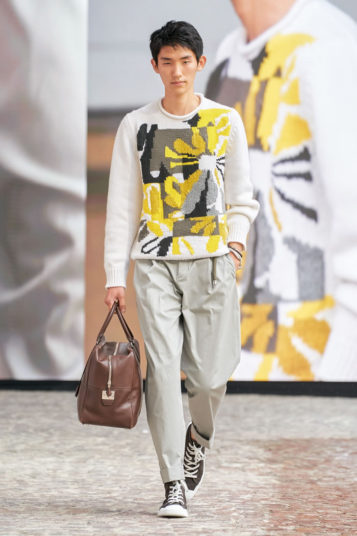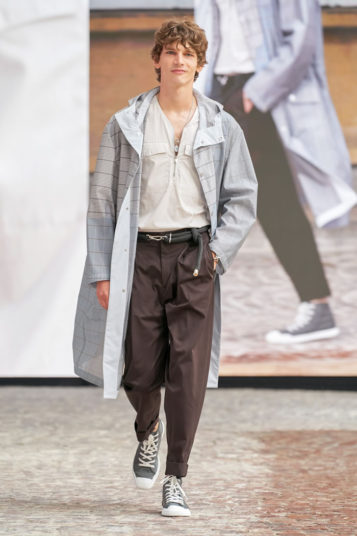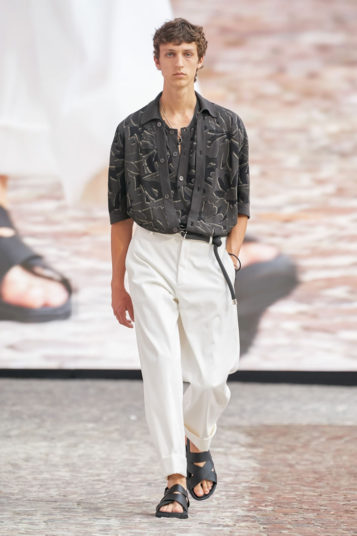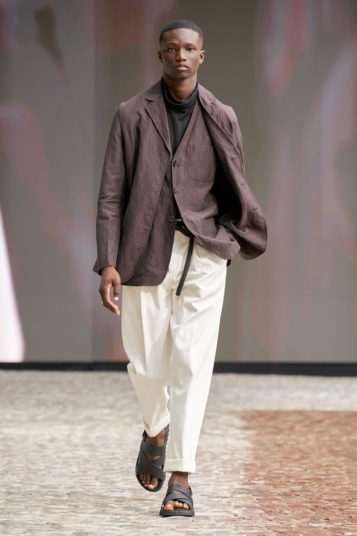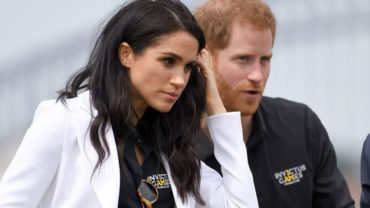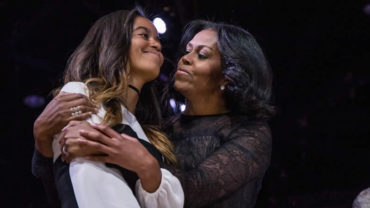However, her Zoom-delivered preview comment applied just as well to the entirety of this exceptional Hermès menswear collection. It was shown this afternoon in the house’s first return to the Auguste Perret-designed stone courtyard of the Mobilier National since June 22, 2019 (the date of its last normal-times spring show). Also making a return was the gifted theater director Cyril Teste, for his third film/défilé collaboration with Nichanian in a row.
As last season, Teste’s screen-displayed lingering zooms and smooth pans allowed those watching from afar—I included—to partly reproduce the real-life show experience I described then as when “your eyes travel back and forth to create a jagged and episodic narrative of perception that is yours to control.”
The difference today was that there was also a real audience on hand, watching this truly live Livestream (so many aren’t), and using their own eyes. As Nichanian said: “It’s important for me not to have a film made previously with a lot of montages… it’s real life with real people looking at the runway.”
Following a period in which life has felt so unreal, real-life was precisely the point. The collection was tight, comprising just 41 looks: “I prefer not to have too many garments, but to have the right ones,” said Nichanian.
At first glance it appeared simple. Yet the more you allowed your eye to travel over and around it, the more the extraordinary, camouflaged within the apparently ordinary, was revealed.
Nichanian called this collection “Double-Jeu,” or “Double Game,” and expressed that in multiple ways. Many of the outerwear pieces, including the opener, were made in panels of gabardine contrasted with “spinnaker,” or canvas, that was vividly colored and fixed with zig zag stitching to echo the free momentum of sailing, one inspiration at the back of the designer’s mind.
Hard to see on the runway, on our Zoom, and even in Teste’s loving close-ups was the meticulous pentimento of double-layered heritage Mors et Gourmettes print, some white-on-white, and sometimes structurally stirred even further by the addition of perforated Hermès Quadrige equine relief.
A large proportion of the pieces were reversible, offering double that value and duality of wearable accents. These included reversible parkas; a new extension of Nichanian’s last-season double tailored jacket with a versatile inner vest; a pale green blouson in soft crocodile; and that last-look zippered jacket (which, inverted, was a hardware-free, more dialed-down declaration).
The layered prints apart, there were glimpses of the natural in abstracted intarsia daisy relief knitwear, fierce eruptions of color in dégradé orange and pink cashmere sweaters, and softer interludes that included a sail-stitched shirt and Bermuda ensemble in blushy pink lambskin.
Connecting to that gentlest breeze of a theme, sailing, the belts were fashioned from rope and many of the bags were cut in canvas as well as leather. Along with those socked boots, there were also some canvas leather boxer boots, pared-down, and calfskin sandals.
Nichanian’s ensembles were beautiful masculine facades that allowed their specialness to remain hidden in plain sight to all except those with the vision to notice. As she said: “It’s about opening yourself up to new ways of seeing.
To play, and to reinvent. Because we should have many lives, a multiplicity. And I always like the honesty of doing something without the big logo.” The suggestion was, correctly, that walking around with a brand name on your chest, bag, or shoe reveals surface but never depth. She added: “Here at Hermès, I am not doing fashion, I am doing clothes. And I am doing them in a way that I hope augments our experience and helps it to evolve.”
This was a collection that called to mind what Antoine de Saint-Exupéry in Le Petit Prince described as “a very simple secret: It is only with the heart that one can see rightly; what is essential is invisible to the eye.” It was a new attitude, and it was interesting.
COLLECTION

